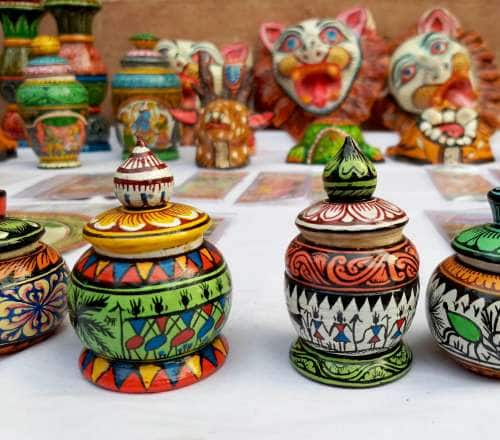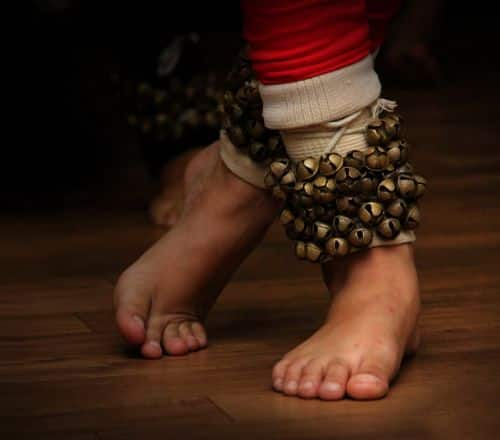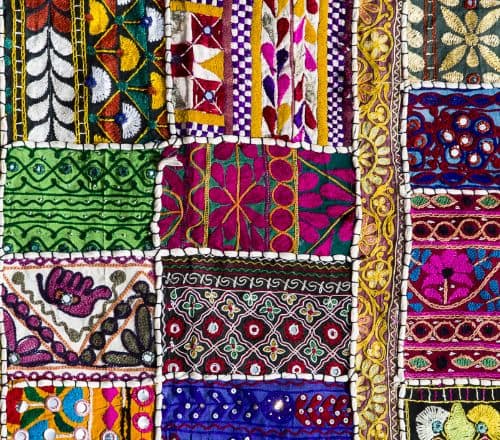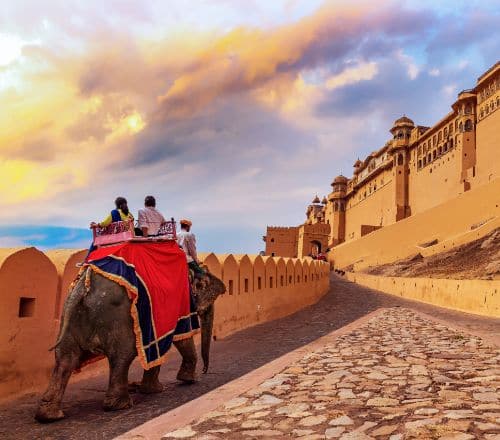Stay logged in to proceed with bookings, orders and offers.
On changing the terminal, you will loose items in your cart. Are you sure you want to change your terminal?
A magical artistic extravaganza set amid history, Khajuraho Dance Festival is where time stands still for a glimpse into the rich cultural fabric.
Dance is simply poetry in motion - stories told by immaculate hand movements and expressions of the dancers. Khajuraho Dance Festival is one of the most notable celebrations of this age-old art form. It is a preservation of Khajuraho's rich heritage that also provides a global stage for world-class artists to bring their best foot forward, quite literally.
Khajuraho, located in Madhya Pradesh, India, is known for its captivating beauty and distinct culture. The city is renowned for its UNESCO World Heritage Site temples, featuring intricate carvings, lush gardens, and dramatic sculptures. Some of these architectural marvels, built by the Chandela Dynasty between the 9th and 11th centuries, provide a breathtaking setting for the Khajuraho Dance Festival.
Every year, during the onset of spring around the end of February and beginning of March, Khajuraho decks up to play host to the majestic dance festival. Renowned artists and their troupes from India and around the world grace the stage of the open auditorium in front of the Chritragupta Temple, dedicated to the Sun God, and the Vishwanath Temple, dedicated to Lord Shiva. The tailored blend of the ancient setting and graceful live performances creates a magical ambience, transporting the audience to a bygone era. The timing of the festival is highly significant as well. Spring symbolizes the replenishment of nature and the creation of new life. It is believed that the Nataraja form of Lord Shiva, the holy deity of dance, created the cosmic bloom during this season.
The performances at the Khajuraho Dance Festival are accompanied by live traditional instruments such as tabla, sitar, sarod, flute, and mridangam creating a melodious symphony. The dancers, adorned in vibrant costumes and intricate jewellery respective to each dance form, captivate the audience with their graceful movements and expressive storytelling. Each dance form has its own unique charm and narrative, showcasing the rich cultural heritage of India.
The Khajuraho Dance Festival features international performers as well, highlighting the global influence of Indian classical dance forms. Here are some of the notable international performers who have taken part in the festival:
Khajuraho Airport, located just 5 km away, is connected with major Indian cities like Delhi, Mumbai, and Varanasi. It has a railway station and highways connecting the city with nearby locations as well. Along with soaking in the cultural extravaganza of the dance festival, the itinerary can also include visits to the other UNESCO temples, such as Javari, Lakshmana, Jagdamba, Vamana, Varaha, Adinath, Chaturbhuj, Matangeshwar, Dulhadev, and Kandariya Mahadev. The beauty of the wilderness that Khajuraho has to offer should also be explored at Panna National Park, Pandav Waterfall, and Raneh Falls Canyon.
Ajaigarh Fort and Mastani Mahal can be visited for a touch of history. One must enjoy the true-blue Madhya Pradesh street food like pakoras and jalebis from the local vendors. To stay closer to the dance festival venue, one can choose from a wide range of luxury accommodations. The Lalit View Khajuraho, Syna Heritage Hotel, Radisson Khajuraho, Hotel Chandela, and Ramada by Wyndham Khajuraho are some of the more opulent options near Chitragupta Temple. There are several budget hotels and homestays as well. Khajuraho is peppered with several local shops and boutiques that sell modern and antique handmade art and craft items. Pick from a wide range of home decor pieces, textiles, accessories, and souvenirs to carry back as a memory of this beautiful place.
Beyond its artistic significance, the festival also fosters a spirit of unity, bringing people together to celebrate the beauty and diversity of Indian culture. A visit to the Khajuraho Dance Festival will not only be entertaining and educational but also inspirational beyond borders.





The Adani One expressly disclaims all liability, direct and indirect, in respect to actions taken or not taken based on any or all the contents of this Blog. The Blog is an opinion of the contributor based on the collation of data from various sources and is provided only for information purpose. Adani One does not canvass, advertise, solicit, invite or induct for any product, merchandise, information, brand or any other materials mentioned in the Blog, nor does it obtain any monetary benefit from the same. Reader is advised to read and apply his/her intellect and discretion in this regard. Any Intellectual Property mentioned in this blog belongs to the rightful owner. We do not intent to claim any interest over the same.